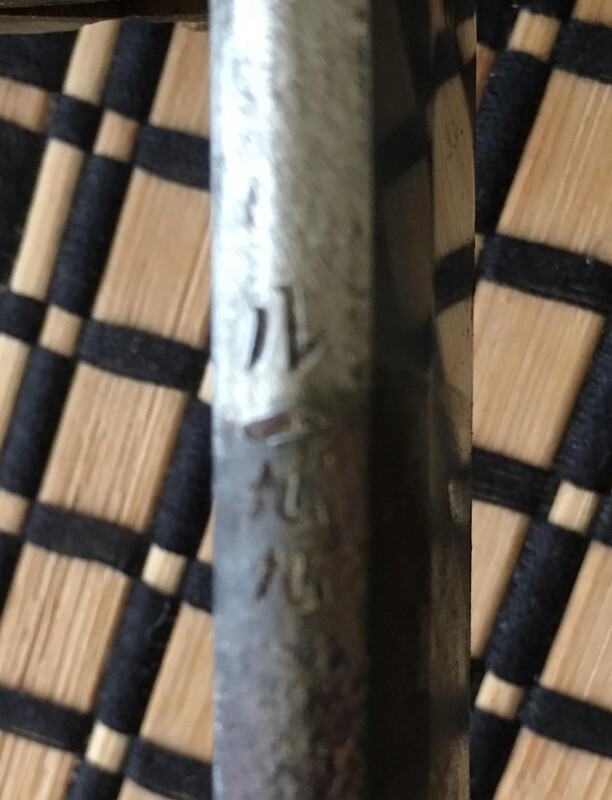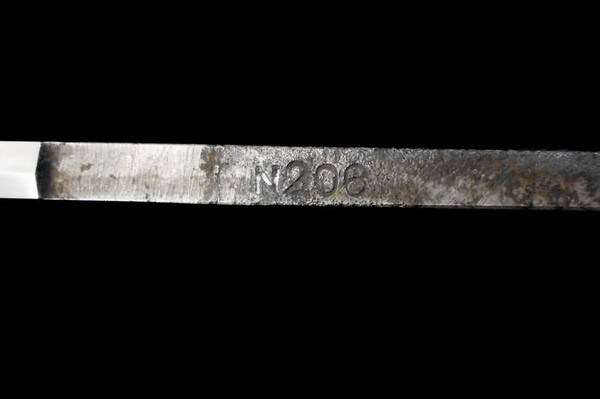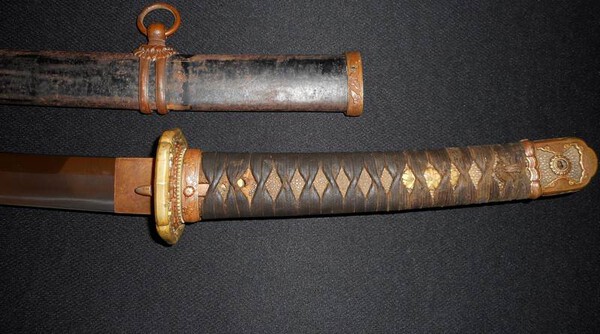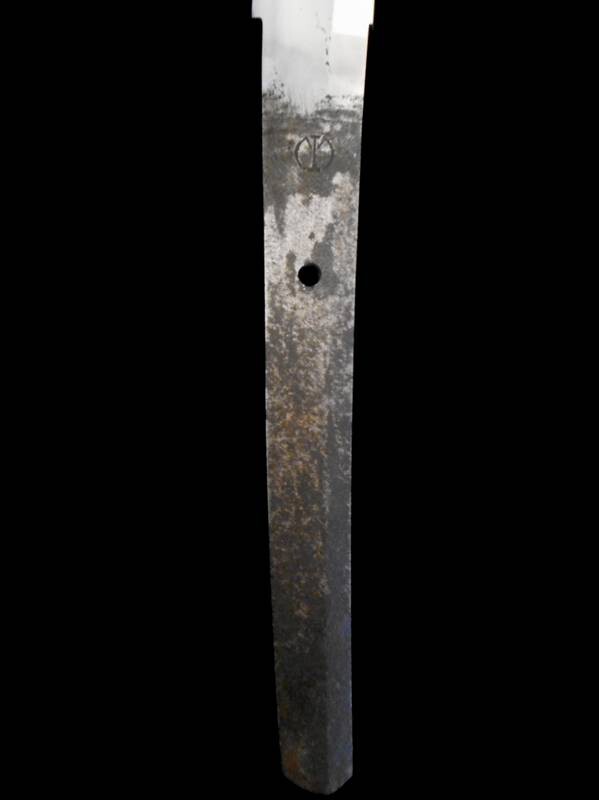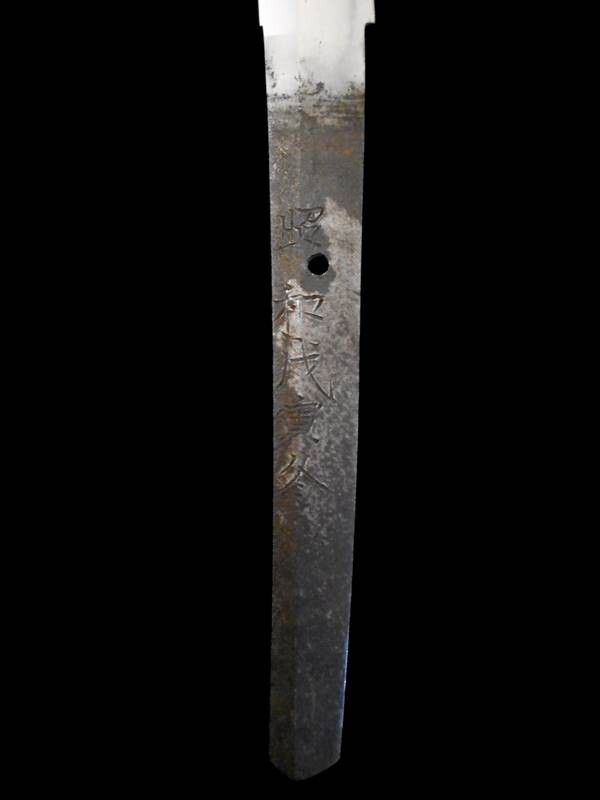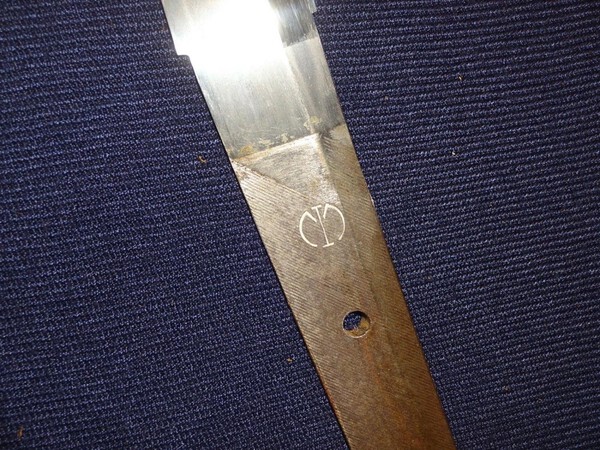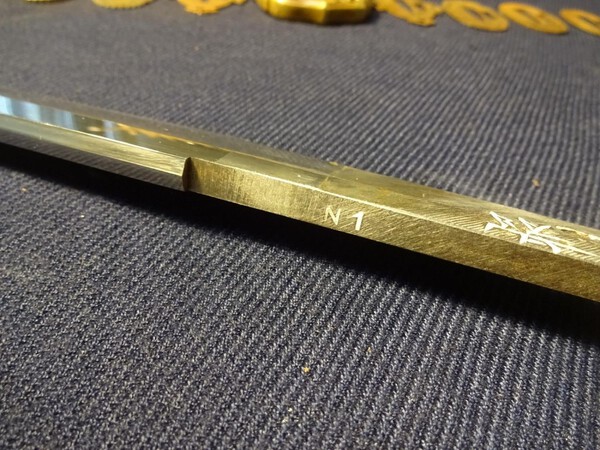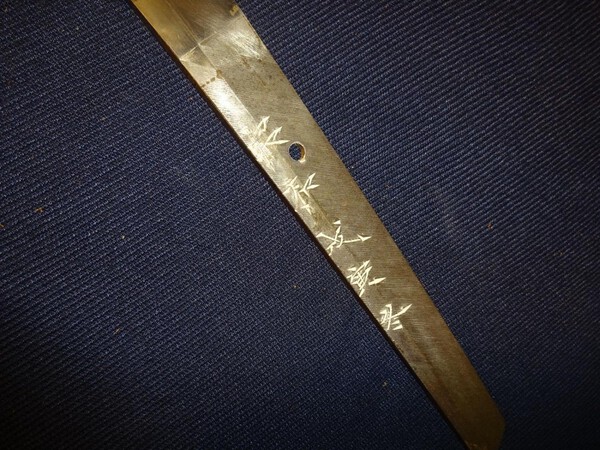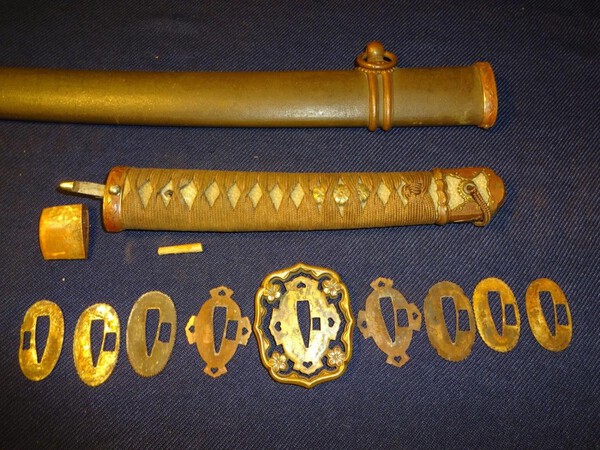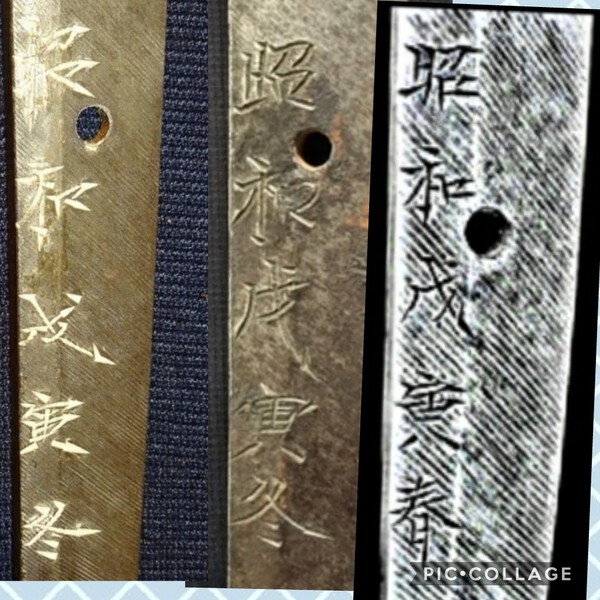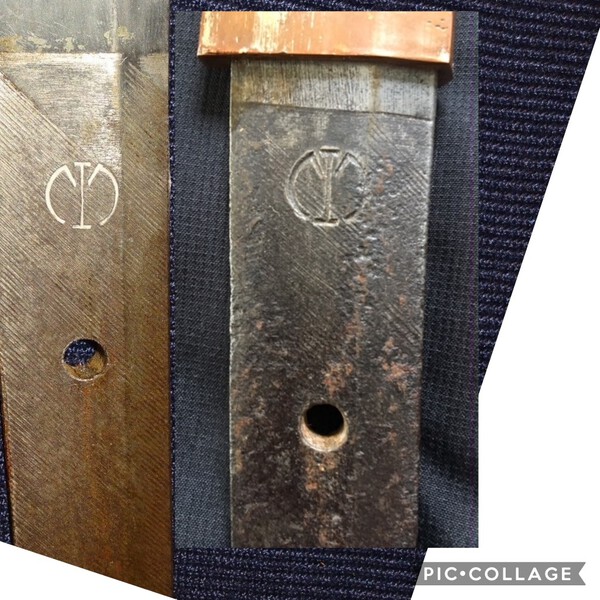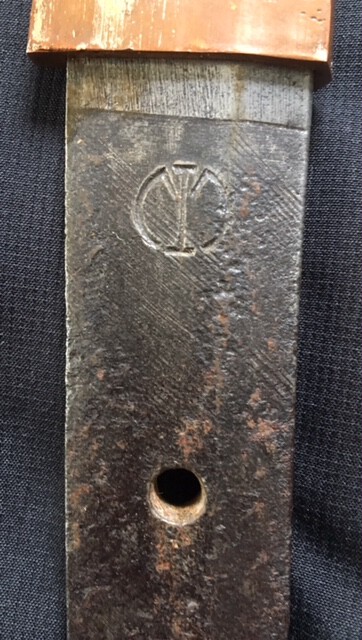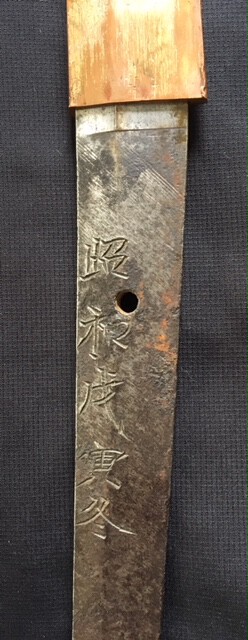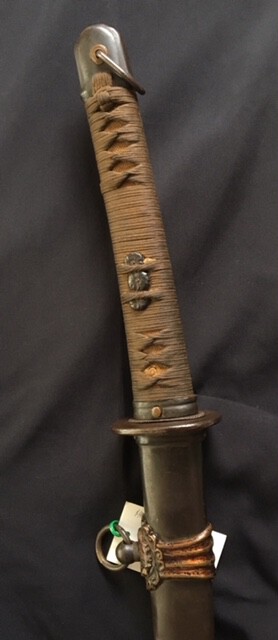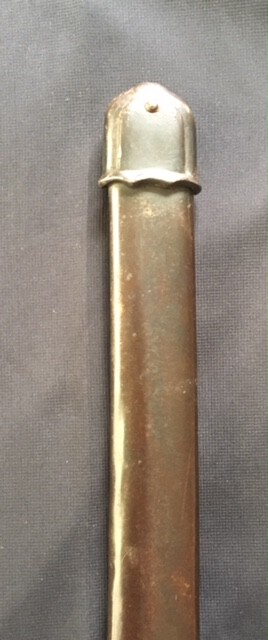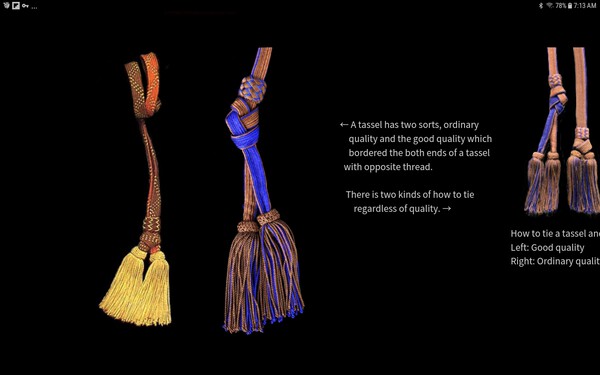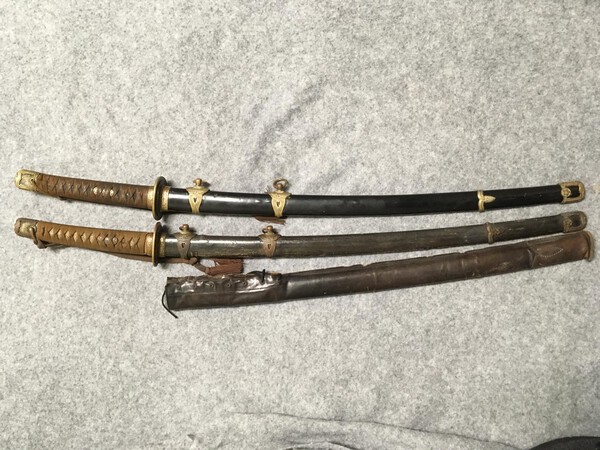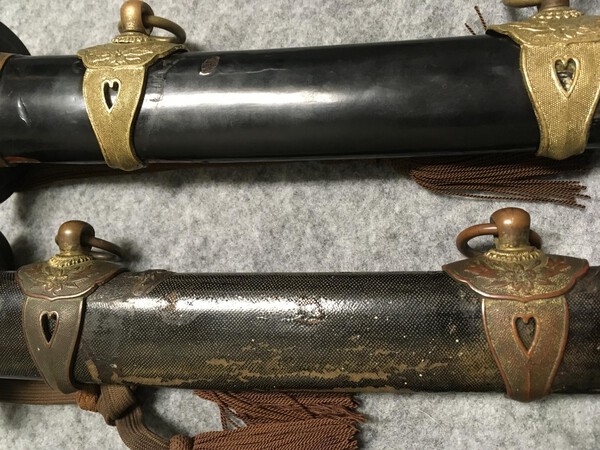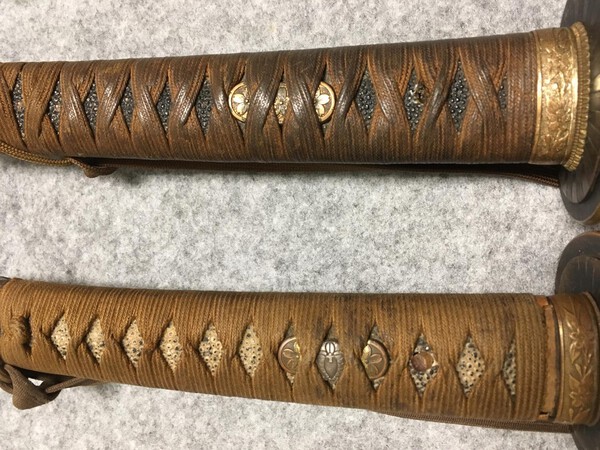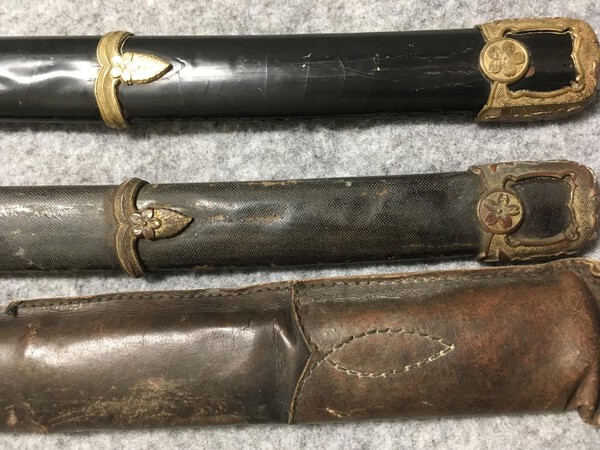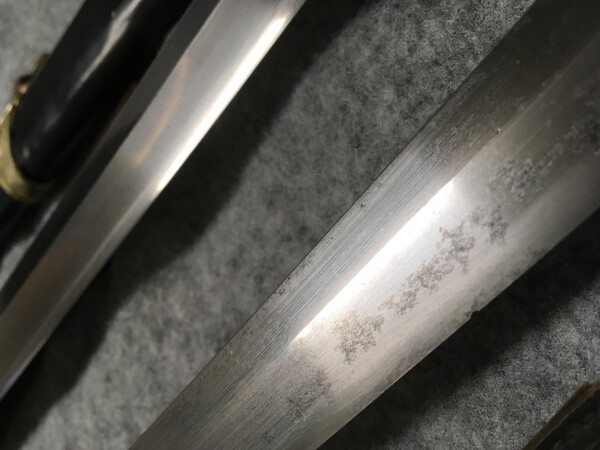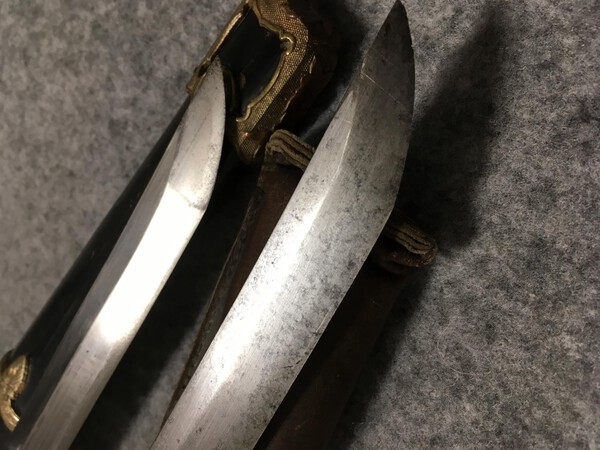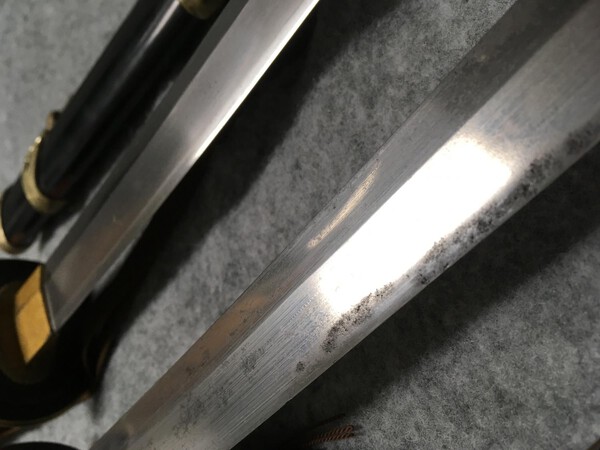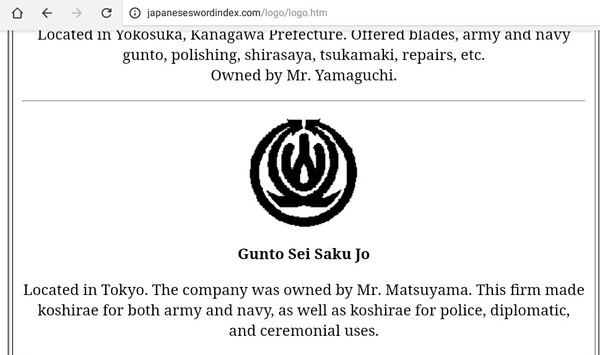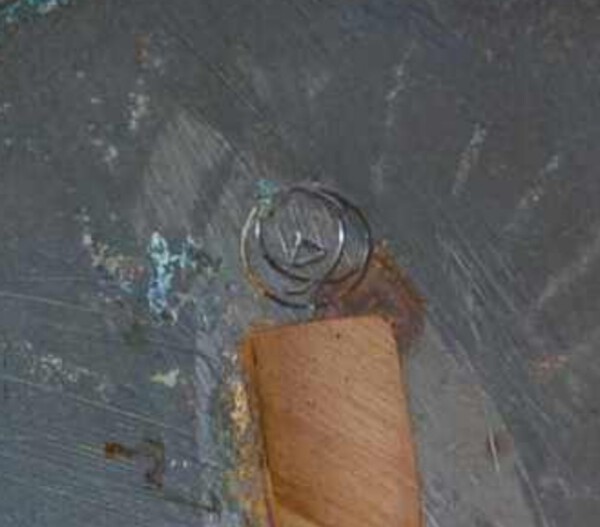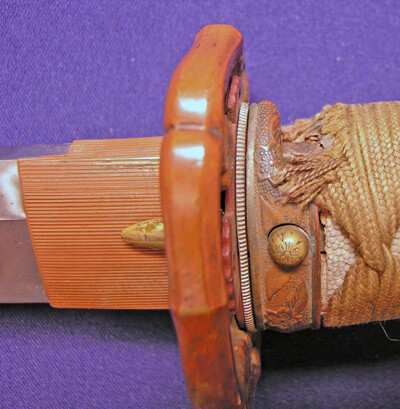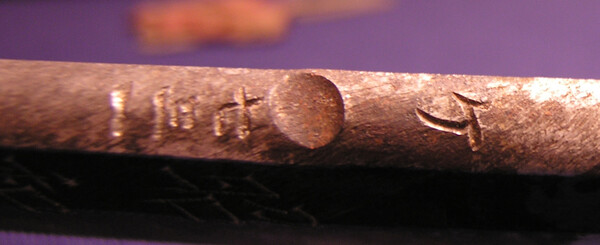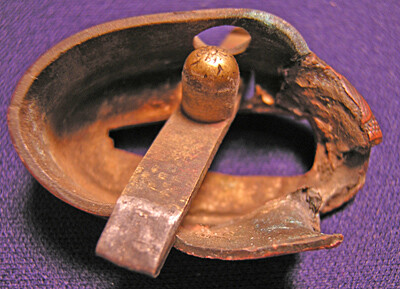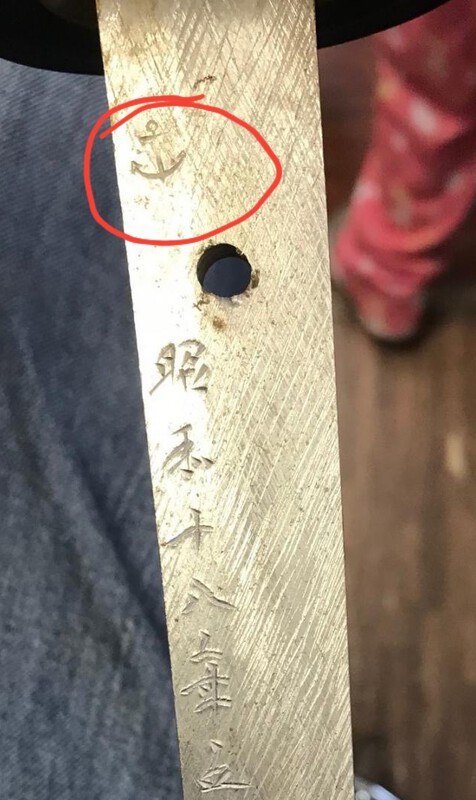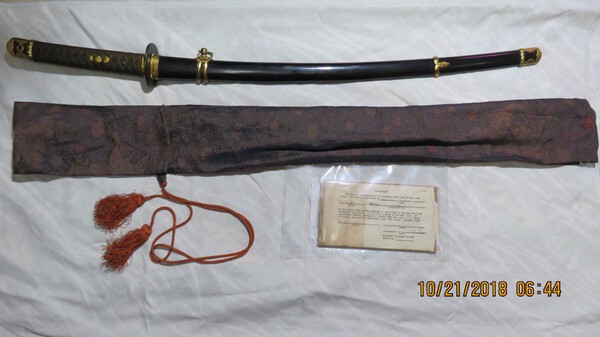-
Posts
13,873 -
Joined
-
Last visited
-
Days Won
169
Content Type
Profiles
Forums
Events
Store
Downloads
Gallery
Everything posted by Bruce Pennington
-

Attention Mantetsu Owners: A Survey
Bruce Pennington replied to Bruce Pennington's topic in Military Swords of Japan
True, and after re-scanning the thread, most of the mune pictured are rounded. -

Attention Mantetsu Owners: A Survey
Bruce Pennington replied to Bruce Pennington's topic in Military Swords of Japan
Ha! It’s all I’ve been looking at for the last few months. I’m on my phone but I’m posting a pic I have available., along with a flat. You should be able to see the difference. -

Attention Mantetsu Owners: A Survey
Bruce Pennington replied to Bruce Pennington's topic in Military Swords of Japan
Oops, I don’t collect many IJA gunto. My 4 are Mantetsu, a chromed fullered one, and two Contingency models. I just learned that blade nakago are normally flat on the mune, except the Mantetsu! AND I should have done some research first. I just found I Mantetsu blade went back and found a ‘38 N 206 and it’s set up in Type 98 fittings AND has a flat mune. It seems the rounded mune must have started at a later date. -

Attention Mantetsu Owners: A Survey
Bruce Pennington replied to Bruce Pennington's topic in Military Swords of Japan
Looking for some help/opinion on this one. Our beloved Showa22 is selling this on fleabay. His reputation alone should be enough for me to reject this as legit, but the blade and file marks both look like Mantetsu work. The nakago is too clean for a '38, as claimed, but then we know Showa22 cleans blades. Comparing the mei to Ohmura's '38 and another '38 I have pics of, is inconclusive as all 3 are different from each other. The Dalian stamp is close and easiest to fake. The "N" of the serial number is EXACTLY identical to the other "N" number I have. I don't like how his showa kanji are scrunched over to the far side. Another problem I have is the flat nakago mune. My experience, so far, is that flat mune were made for Type 3, Rinji model fittings, but this is in Type 98 fittings (Ok, we already know Showa22 re-fits all sorts of fittings) but if you look at the seppa and tsuba, they have flat-topped holes for the nakago! Does ANYONE have a Type 98 with flat-topped nakago mune and appropriately fitted seppa and tsuba? That would help in my study of the issue, along with trying to decide what to think about this gunto! -
All, Something intriguing popped up in my pursuit of Mantetsu blades and numbers. It is a 1938 blade with Dalian Railway stamp, no Mantetsu mei, zodiacal date (Winter '38) and alpha/numeric serial number "N 156." Assuming that the Mantetsu operation used the alphabet and numbers chronologically, this is the earliest Mantetsu blade I've seen in collector's hands outside of Ohmura's "C 30". What's significant is that it is made for, and mounted in what has been, up until now, called the "late war" or "home defense" officer fittings. Similar to the Rinji (Type 3; contingency) model, it differs in that the ishizuke is very plain, no frills as is the kabutogane - more so than the standard Rinji style. I say that the blade was made for these fittings, as opposed to re-fitted later, because of the flat nakago mune. If you will take a look at the mune of all Rinji-mounted blades, whether Mantetsu or not, they have a flat mune and the seppa and tsuba holes for the nakago are flat at the top. ALL Mantetsu I have seen, mounted in Rinji fittings, have been made with flat nakago mune. The serial number is stamped on top of it. What's challenging about this is that the Rinji style was ordered Sept of '38 and according to Nick Komiya, Warrelics, the model hit the streets in 1940. With a date of "Winter" '38, this gunto COULD be a prototype of the Rinji style. If so, the styling was adopted and jazzed up a tad bit in production models. If this is the case, though, why would we still see this most rudimentary version years later (seen in '44 models), so much so, that they were labeled by both Fuller and Dawson as "late war"? Possibilities come to mind, but none of them are supported by facts or documentation - Was this a model specifically made for the brutal cold of the China campaign (a few Mantetsu have been found in these fittings)?; Was this a prototype for the Rinji, and after adoption, the contractor continued making this style throughout the war?; Was this single set made for Rinji trials, and later adopted by late-war manufacturing orders (Dawson says Fuller cited documents ordering this style at the end of the war)? We don't know. What we DO know is someone owns a 1938 blade made by Mantetsu specifically for Rinji-styled, or home defense styled, fittings! It doesn't make sense that this style was "home defense" in 1938. I will send this to Richard Fuller and see what he thinks. Any updates I get will be posted.
-
That is an oddball! Hopefully someone who really studies tassels can chime in. The general's tassel should look like this the attached.
-

Nlf Gunto Discussion
Bruce Pennington replied to Bruce Pennington's topic in Military Swords of Japan
You’re right John. Just looked bad on my little iPhone before. -

Nlf Gunto Discussion
Bruce Pennington replied to Bruce Pennington's topic in Military Swords of Japan
Thomas, This is one of those that no one will be able to say how it got this way. It's clearly not one of these "NLF" post-war souvenirs. The ito (handle wrap) has been re-wrapped, and not by a pro. So, it's likely an ametuer's effort to return what was once a kaigunto in bad shape, to a seemingly original condition. My Dad's Mantetsu came to me missing those same parts. In fact, it was missing the tsuba and seppa too! I took my time, and learned a lot before I replaced the missing parts with wartime-correct fittings. That's a very nice sharkskin upgrade to the saya! Is the blade dated? -

Tale Of Two Mantetsu Swords
Bruce Pennington replied to PNSSHOGUN's topic in Military Swords of Japan
Steve, I don't think John is just talking Mantetsu - it's the comparison of any two of a type. John, Here's 2 Navy gunto. One almost pristine, lived the easy life obviously! The other with combat leather, shows considerable wear to the sharkskin-covered saya, all the gilding is worn away, the black laquer of the same' is worn off. Additionally, the blade is a 4-600 yr old family blade that has a reshaped kissaki, a nick in the edge and centuries of aging. -
The stamp on your tsuba (hand guard) is of the Gunto Sei Sako Co, who made the fittings for the blade:
-

Nlf Gunto Discussion
Bruce Pennington replied to Bruce Pennington's topic in Military Swords of Japan
And another counter document from a discussion at Gunboards: It tells how permission to bring back war trophies was terminated in 1946. So, with this in mind, it is clear why the PX certificate was worded the way it was - regardless of the true origin of the gunto. On this fact alone, the 1950 document doesn't really tell us the facts we are looking for. I still think it is telling that the PX was selling them, and in 1950. To me, 5 years after the war was over, this indicates that brand new swords were being made and the PX was involved in the sales -
Yes, Didier, the top one is an enlisted man holding an officer gunto with an NCO tassel. He is an officer candidate. The bottom one seems to be a sgt holding a Type 95, NCO tassel, but I cannot see the bohi on the blade, unless it's just obscured by the shadow. The kissaki looks too long for a 95 though.
-
One side is often fatter than the other. Plus the wrap is covering, most likely, the fat end. Just have to try both sides. Sometimes I’ve had to grab the peg with small pliers. It just bamboo, if damaged they’re easy to replace ($3).
-
I’m afraid this appears to be a fake. But it’s not a kaigunto, it’s pretending to be a Type 98 Officer gunto. They were making fakes before the war was even over, and many more right after the war. Many G.I.s got duped. Further confirmation can be had with pictures of the tang. Hope you didn’t pay much. I still have the bad fake I bought years ago.
-
Yes, and it adds evidence that this “style” or mix was possibly “normal.”
-

Japan Sword Company Swords - For The Us
Bruce Pennington replied to Peter Bleed's topic in Military Swords of Japan
It’s all part of the history of the era, so thanks for the pics Peter! -
Thanks Didier. Yes definitely a reproduction. And agree with Dave on the interchangeability of saya - sometimes. I tried it on my Type 95s and some would switch and some wouldn’t, and those blades are more standardized than Officer gunto. But even with officer gunto there were some basic overall specs on dimensions, so always a chance of getting a fit on a saya made for another blade.
-
With WWII gunto, all the above options are possible. I have learned to never say "never" or "always" with gunto. Didier, as the owner will have to decide where he thinks this one lies on the spectrum of options and customization. Dawson has pictures of NCO's carrying civilian swords, NCO gunto, and officer gunto (as officer candidates). I was trying to find my reference for the officer candidate issue. Dawson has a couple of pics of NCO's as officer candidates carrying both Kyu- and T98 gunto, with officer tassels, but I thought I had seen some with NCO tassels on officer gunto as well, but cannot find the reference. Although my mind might be melding in the NCO T95 with Officer tassel instead. Didier, if you want to post some close-ups of the tassel barrel and the stiching on the buckle area, we might be able to help with ID'ing it as reproduction or original.
-

Any Shin Gunto With "battle Scars"?
Bruce Pennington replied to PNSSHOGUN's topic in Military Swords of Japan
Here's a Mantetsu gunto with a bullet strike on the fuchi: https://japanesesword.com/archived-pages/2017/7/28/mantetsu-to-in-34-pattern-shin-gunto-mounts-hit-in-the-fuchi-by-bullet -

Can Someone Please Help Me Identify This?
Bruce Pennington replied to dominator315's topic in Military Swords of Japan
HA! I guess my head was somewhere else when I was looking at this! And the anchor is lightly stamped not showing all the detail, but it is Tenshozan. -

Can Someone Please Help Me Identify This?
Bruce Pennington replied to dominator315's topic in Military Swords of Japan
Can't help with the smith, but the date is 1945. Month is really messy, but I think it's "5", so, May. -

Nlf Gunto Discussion
Bruce Pennington replied to Bruce Pennington's topic in Military Swords of Japan
Significant find! One of these for sale that comes with it's bring-back certificate. It's written out by the 8th Army Exchange and says it's a souvenir not a war weapon. By all appearances, it was sold by the PX! I think these were being made as part of MacArthur's post-war effort to keep businesses running. You can see more of it on this thread: http://www.wehrmacht-awards.com/forums/showthread.php?t=984036 -

Looking For Translation Assistance On This Sword From Ww2
Bruce Pennington replied to Bob-K's topic in Translation Assistance
I’m thinking 清次 (Kiyotsugu), but I’m not good at the smith names! -

Showato Koshirae Manufacture?
Bruce Pennington replied to lambo35's topic in Military Swords of Japan
You can find the logo's and names of several of the contractors here: http://japaneseswordindex.com/logo/logo.htm



